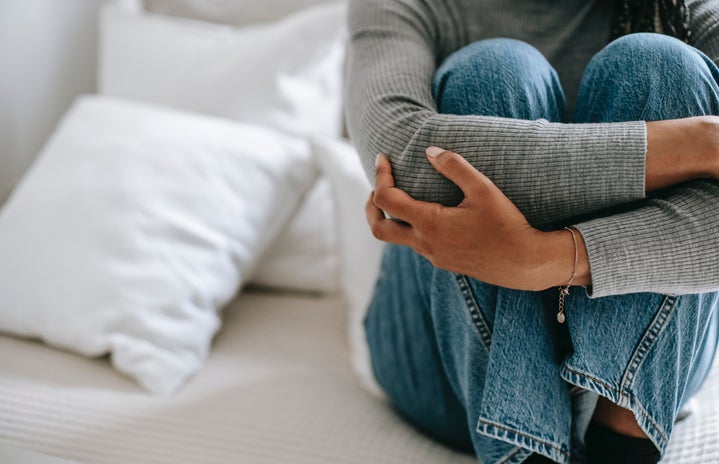Unexplained bruises, frantic excuses, weathered casts, heavy makeup concentrated on certain areas—All of which are signs of physical abuse.
According to Reach Beyond Domestic Violence, the generalized definition of abuse is, “a pattern of behavior used by one person to gain and maintain power and control over another.” When applied to physical abuse, abusers will maintain a pattern of abuse and “love-bombing.”
Love-bombing is a tactic used by abusers that involves showering the person they are targeting with extreme amounts of attention and affection both prior to the abuse and post abuse. The tactic is meant to trick them into believing that the abuser is capable of expressing love and that they will not be abused if they simply “follow the rules.” This tactic is used anytime the abuser feels as though they have lost control over a person, in order to draw them back in and convince them that they are in a loving relationship.

Physical abuse is defined as an intentional act meant to cause injury or trauma to someone by bodily contact via punching, hitting, kicking, strangling, physical restraint, etc. Additionally, the act of making someone feel physically unsafe by purposefully exposing them to their fears i.e. driving recklessly can be characterized as physical abuse as well.
Major signs of Physical Abuse:
-
Suspicious bruising accompanied by inconsistent explanations
-
Marks on the body, particularly the neck and face
-
Sprained and/or broken bones
-
Changes in style i.e. wearing winter clothes in the summer, donning sunglasses inside and wearing heavier than normal makeup
Tactics used by the abuser include, but are not limited to:
-
Covert Physical Aggression: The introduction of subtle acts of aggression as a means of control.
-
Examples include: “Accidental” destruction of property, frequently referencing physical abuse and/or threats of abuse in jokes, and display of unwanted “rough” behaviors when showing affection and while being intimate.
-
-
Intermittent Reinforcement: The act of conditioning another person through a random reward and punishment system.
- Examples include: Gifting of flowers following a frightening bout of rage, receiving an invitation to a romantic dinner after a series of threats made the night before and love-bombing after abuse occurs.
-
Sabotage: Intentionally destroying something or someone’s image.
- Examples include: Intentional destruction of an item that the abuser feels is important to the person they are targeting i.e. a family heirloom, purposefully creating tension between someone and their friends/family and harming them in order to prevent them from attending an occasion.
-
Fear Mongering: Deliberately instilling fear in someone.
- Examples include: Use of threats that are suggestive of harm to another’s image, physical harm to them and/or threatening to harm their loved ones.
Long-term effects of Physical Abuse:
-
Fibromyalgia: In 2019, a study revealed that 38% of patients with fibromyalgia had a history of abuse. It showed that they were more prone to severe symptoms (22 out of 30 symptoms to be exact), generalized weakness throughout the body and pain disability (extreme sensitivity or tolerance) than patients who had no history of abuse.
-
Criminal behavior: Anger and violence prior to abuse are common coping mechanisms among domestic violence survivors. They use those mechanisms as a way to take back the power they lost during the abuse. Because of this, the risk of engaging in future criminal behaviors doubles. Correspondingly, most of their criminal history will reflect the abuse they experienced in some way.
-
Intergenerational transmission of abuse: In 2016, a study found that parents who had a history of at least one count of abuse in their childhood were more likely to abuse their children by 72%. As for parents with a history of consistent abuse, the likelihood increased to 300%.
-
Functional changes in the prefrontal cortex: In 2012, a neurological study discovered that those who have suffered from abuse-related trauma may show a significant reduction in their prefrontal cortex volume on scans. Additionally, functional abnormalities may occur in the cortex as well leading to deficient memory processing.
Sources:
https://www.confusiontoclaritynow.com/blog/covert-abuse-tactics
https://www.medpagetoday.com/meetingcoverage/acr/83253
https://ase.tufts.edu/tier/documents/2016NeglectIntergenerationalTransmission.pdf


